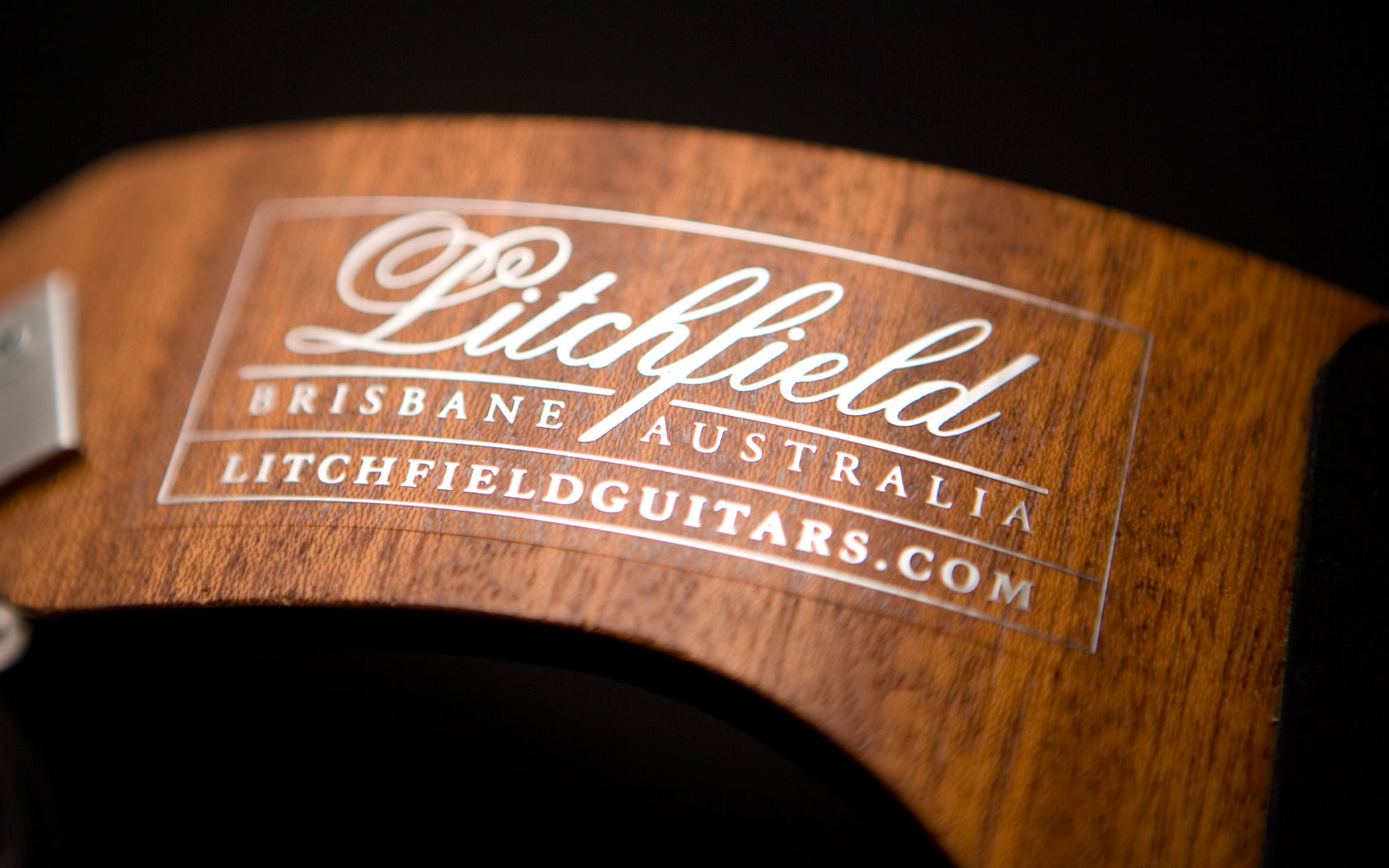The first stage of making one of my signature classical bridges is laminating the blank, with ebony capping for the tie block. I prefer to use ebony capping rather than bone due to its comparable hardness, and also that bonding wood to wood provides a better structural integrity than bone to wood. My bridges have a fairly streamline and slim design to minimise mass and reduce stress risers; so I use what I feel is the optimum choice of materials, including the choice of Australian Silver Ash over traditional timbers like Rosewood for the body of the bridge. Silver ash is a tough, medium...
Read more...
The start of my latest commission is the selection of materials. This is an order for a custom 7 string guitar in my C900 cedar top classical format.
The joint between the headstock and neck is a scarf joint; a predetermined angle is set by cutting and facing two wedge shaped surfaces and mating them together, under very close tolerance, to provide a strong and nearly invisible bond line.
As shown, the 7 string headstock is asymmetrical, allowing a 4 barrel machine head on the bass side, and the standard 3 barrel on the treble. Accordingly the headstock is 35mm longer...
Read more...
One of my clients has given me a restoration project, which exceeds the value of the instrument. Sometimes the sentimental value of a guitar is far greater than the monetary cost, which I am sure all guitarists will understand! At some point the original finish of the guitar was removed and replaced with orange shellac. My job is to try to restore as much as realistically possible, the original colour and patina of the original, given that there is not much timber left to sand out and so many defects will have to remain or just be minimised.
Read more...
I have just got to the sealer coat stage which is a nice place to be. It is the start of where you leave the roughness and rawness behind. There is still heaps to do mind you. Just prior to sealing the timber is sanded or scraped or both, to pare all surfaces flush and smooth, removing edges and scratches that would show up badly under the final stages of finishing. This is a good time to check over any spots that may get overlooked.
The next couple of days look to be wet, so work on guitars will have to slow a little. Below is a little of the paring work before sealer coat on another...
Read more...
Gluing cracked guitars together is often just the beginning of the work on the aesthetics. Lacquer previously coating joints also cracks, but usually in a manner that leaves a crater along the length of the crack. These need to be repaired in a similar fashion to small dents and scrapes, with either clear or colour matched lacquer, or something similar. In this case I used a colour matched lacquer to minimise the "obviousness" of the original damage. The shrinkage of the lacquer as it cures has to be accounted for before any leveling or over coating can be done. The photo below shows...
Read more...
Every now and then I get a challenging and interesting repair job. Truthfully, this one was pretty far gone as an instrument and I was tossing up not doing the job, given the choice by the owner. The guitar was a 1952 arch top Maton Supreme - a style of guitar I don't normally work on being a classical specialist. It had seen some good, and bad years. It was a much loved family heirloom, and so the fact that the repairs would likely exceed the value of the guitar wasn't so important to the owner. In addition, the owner was very forgiving if after the work was done, it was still not going...
Read more...
I've had to put my early guitar project on hold for a little while, while I attend to my clients orders. I hope to get back to them mid year when I plan to have these guitars made and shipped to my clients. The very start of the process for the guitars coming is to make another lot of necks which will take care of over a years worth of guitars, which isn't really that many due to the intensity of the work! Here are a few photos of some of the process to get the necks at the point just before they are ready for new builds. The idea is to leave them with just enough finishing and roughing...
Read more...
If you are interested in reading a little on my thoughts about strings, intonation and classical guitar set-ups, please check out my recent conversation with Kazu Suwa on his blog....
http://kazu-classicalguitar.co.uk/blog/content/conversation-with-lance-litchfield-guitar-maker-strings-intonation-compensation
Read more...
Simon is an amazing performer based in New York, and I am excited to say he will soon receive two C900 guitars while teaching masterclasses at the Sydney Summer School in Jan 2015. Here is a link to his blog article.
http://www.classicalguitarcorner.com/simons-update-dec-2014/2151/
Read more...
For those of you curious about some of the workings and tooling that goes into making guitars, I thought I would add this post I put up on the Delcamp forum. A lot of small tools that I make for myself are made from old, otherwise useless things we have laying around. I plead guilty to hording anything that looks remotely useful in the hope I'll use it for something some day! It's pretty satisfying when I finally find the use for it. They may not be pretty but they can really work well.
This is a little tool I made which I use for gluing weights under the top when tuning out resonances...
Read more...

